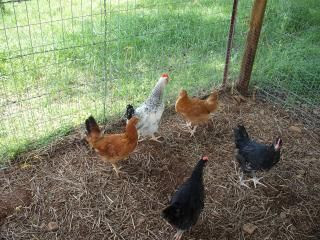 |
| jaspafarm |
This is where
some poultry keeper gets it wrong while some also get the information write. Space requirment is another major factor any poultry keeper must fully understand before
stocking layers in the farm, as well all know that ventilation go a long way in
the lives of chickens present in the farm at particular time.
If you stock too many layers together you may likely not getting reasonable result from the stock which is the reason of setting a standard spacing for them in the poultry.
Meanwhile, weather condition or period or seasons of the year contribute largely on the effect of over and under stock of laying birds in the poultry.
Before stocking layers in the farm, the following points should be considered
If you stock too many layers together you may likely not getting reasonable result from the stock which is the reason of setting a standard spacing for them in the poultry.
Meanwhile, weather condition or period or seasons of the year contribute largely on the effect of over and under stock of laying birds in the poultry.
Before stocking layers in the farm, the following points should be considered
Climatic condition determine layer space
This is the most
important factor any one keeping chickens must consider before stocking and
after stocking.
During the hot season of the year more water is been taken away from the body thereby increases their body temperature, and if this continue for long where there are too many layers cluster together.
It may result to death of some chicken in the farm which as well results to shortage. Whether the season is conducive or not, too many layers are not permitted to be in one place.
During the hot season of the year more water is been taken away from the body thereby increases their body temperature, and if this continue for long where there are too many layers cluster together.
It may result to death of some chicken in the farm which as well results to shortage. Whether the season is conducive or not, too many layers are not permitted to be in one place.
Breeds selection affect layer space requirement
Not all chicken
breeds will live happily in a confined space, so choose carefully. Many of
the light layer types, especially those of Mediterranean origin, tend to be
flighty anyway and will become fretful if restricted.
Some of the heavy breeds are less active, but can easily become fat in a small run. You may decide on bantams if space is tight, and there are small versions of most of the large breeds, bear in mind that they will share many of the characteristics of their larger relatives.
Bantam varieties of full size breeds often lay as well if not better than their big cousins. Their eggs will be smaller, although not necessarily proportionately so.
Some of the heavy breeds are less active, but can easily become fat in a small run. You may decide on bantams if space is tight, and there are small versions of most of the large breeds, bear in mind that they will share many of the characteristics of their larger relatives.
Bantam varieties of full size breeds often lay as well if not better than their big cousins. Their eggs will be smaller, although not necessarily proportionately so.
Some chickens
are better off kept in a covered run. Silkies, for example, as their strange
fur-like feathers are not very weather-proof.
Chickens with heavily feathered feet and legs become bedraggled and miserable in muddy conditions. Very tiny bantams are vulnerable to a number of predators, and will be safer in a roofed run.
Chickens with heavily feathered feet and legs become bedraggled and miserable in muddy conditions. Very tiny bantams are vulnerable to a number of predators, and will be safer in a roofed run.
There are also
the true bantams with no large equivalent, and many of these make lovely pets.
They are not the best of layers and their eggs will be small, but bantam eggs
are often rich in color and flavor.
Hybrid chickens have been bred for docility, and most types will live comfortably in a run – or you could adopt some ex-battery hens, who will find even a small run relatively spacious.
Hybrid chickens have been bred for docility, and most types will live comfortably in a run – or you could adopt some ex-battery hens, who will find even a small run relatively spacious.
Ages of the birds determine space requirement
Another thing is
the age of birds, at tender age more might be stock in a place or together due
to their small sizes.
As they continue to grow, they increase in sizes and as well in body weight. For best result, as they keep growing keep separating them as well by doing this they reduces in number in where ever you stock them.
As they continue to grow, they increase in sizes and as well in body weight. For best result, as they keep growing keep separating them as well by doing this they reduces in number in where ever you stock them.
Cage sizes/ house
 |
| jaspafarm |
As well cage
sizes determine the number of layers to stock. You might not have capital to
purchase the standard battery cage and you planning to go for local one in
which they build on different dimension.
So depending on the maker, bigger cake will surely accommodate more layer while is otherwise for smaller cage.
So depending on the maker, bigger cake will surely accommodate more layer while is otherwise for smaller cage.
Determining the
size of hen house you need is kind of like a chicken and the egg quandary. You
need to know how many laying hens you will be housing in order to build the
coop, but you have to have a coop before you can bring home your hens.
The amount of space available for a hen house might dictate how many hens you'll end up with. Build your hen house first then figure out how many laying hens you can have.
Since 2 1/2 to 3 square feet is the amount of floor space each of your hens will need, divide the square footage of your coop by 3. The resulting number is the maximum number of laying hens you should have
The amount of space available for a hen house might dictate how many hens you'll end up with. Build your hen house first then figure out how many laying hens you can have.
Since 2 1/2 to 3 square feet is the amount of floor space each of your hens will need, divide the square footage of your coop by 3. The resulting number is the maximum number of laying hens you should have
No comments:
Post a Comment